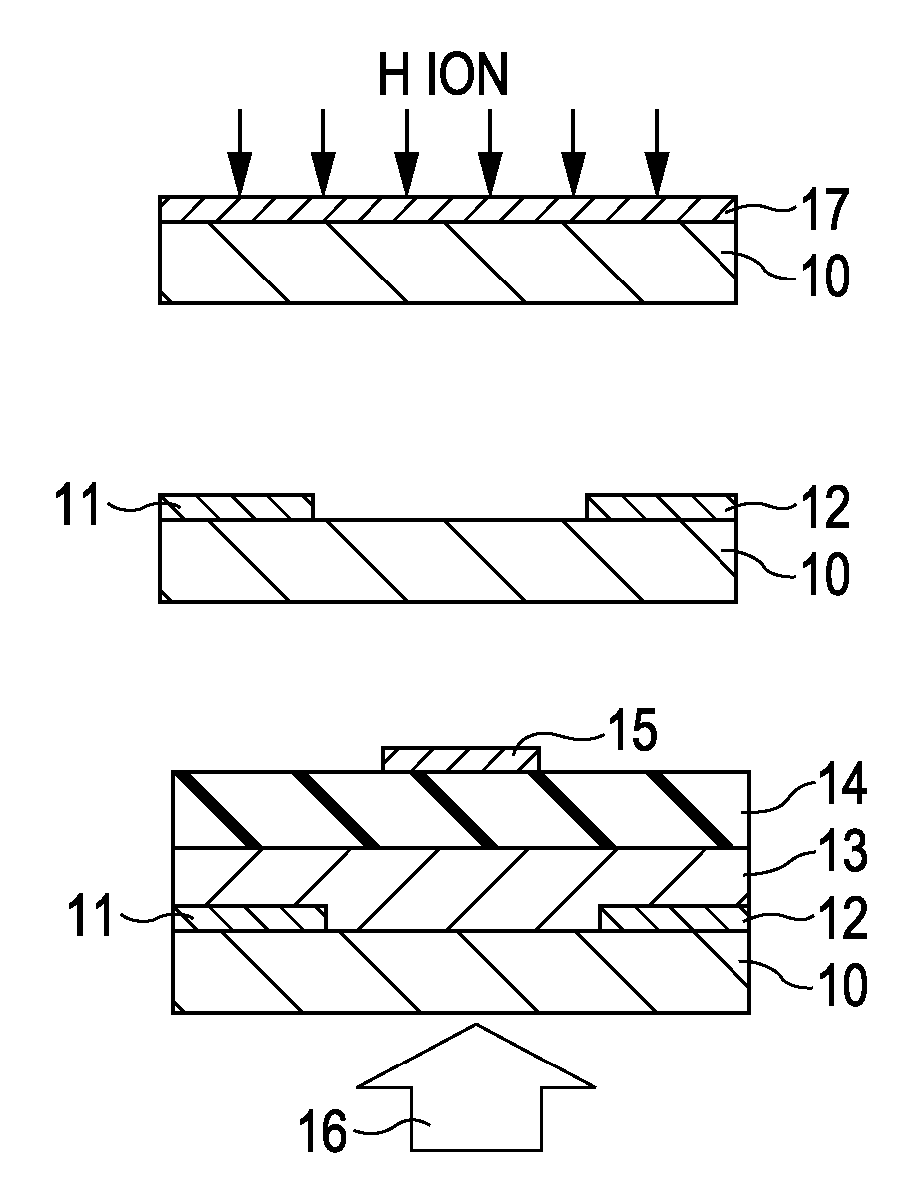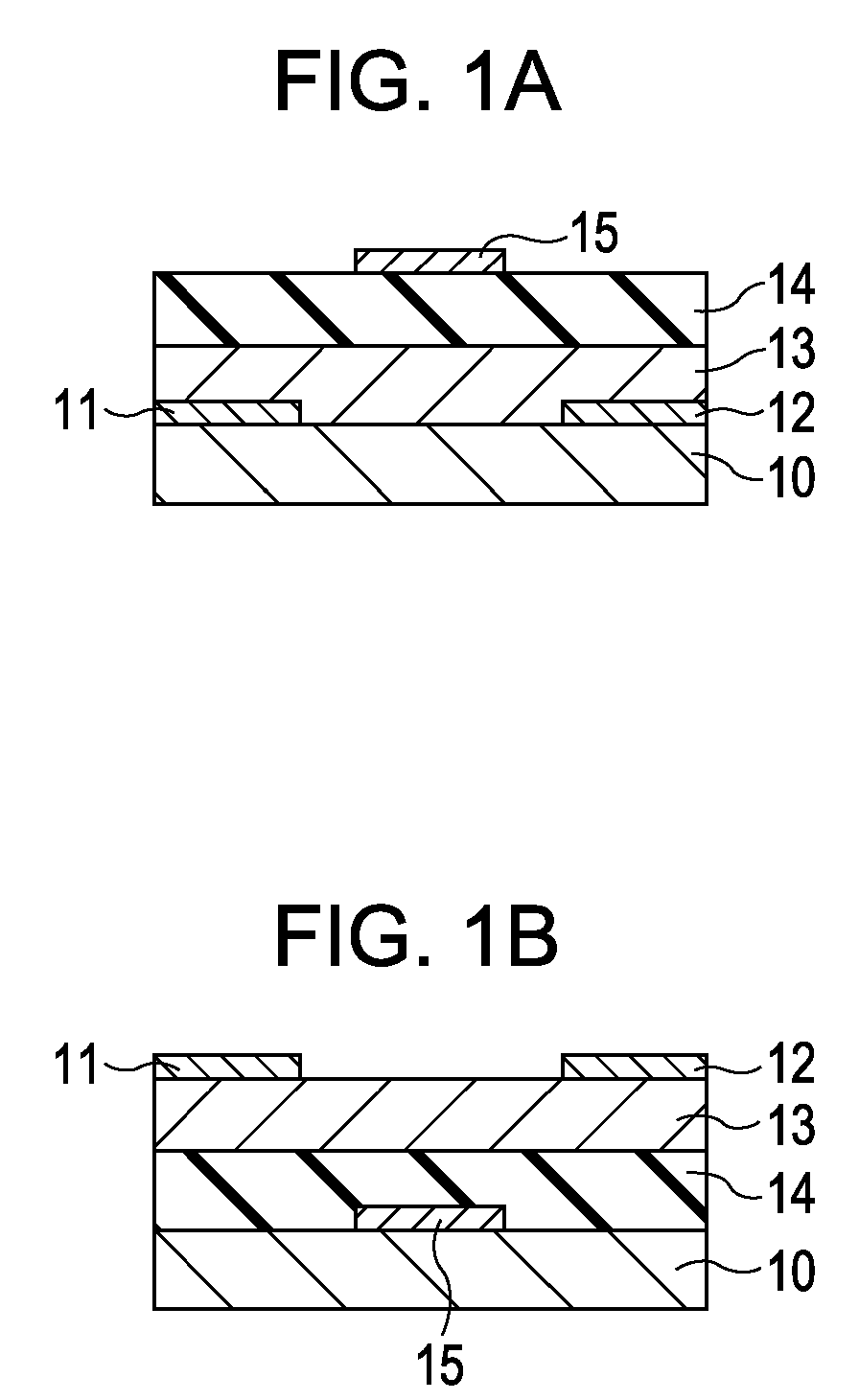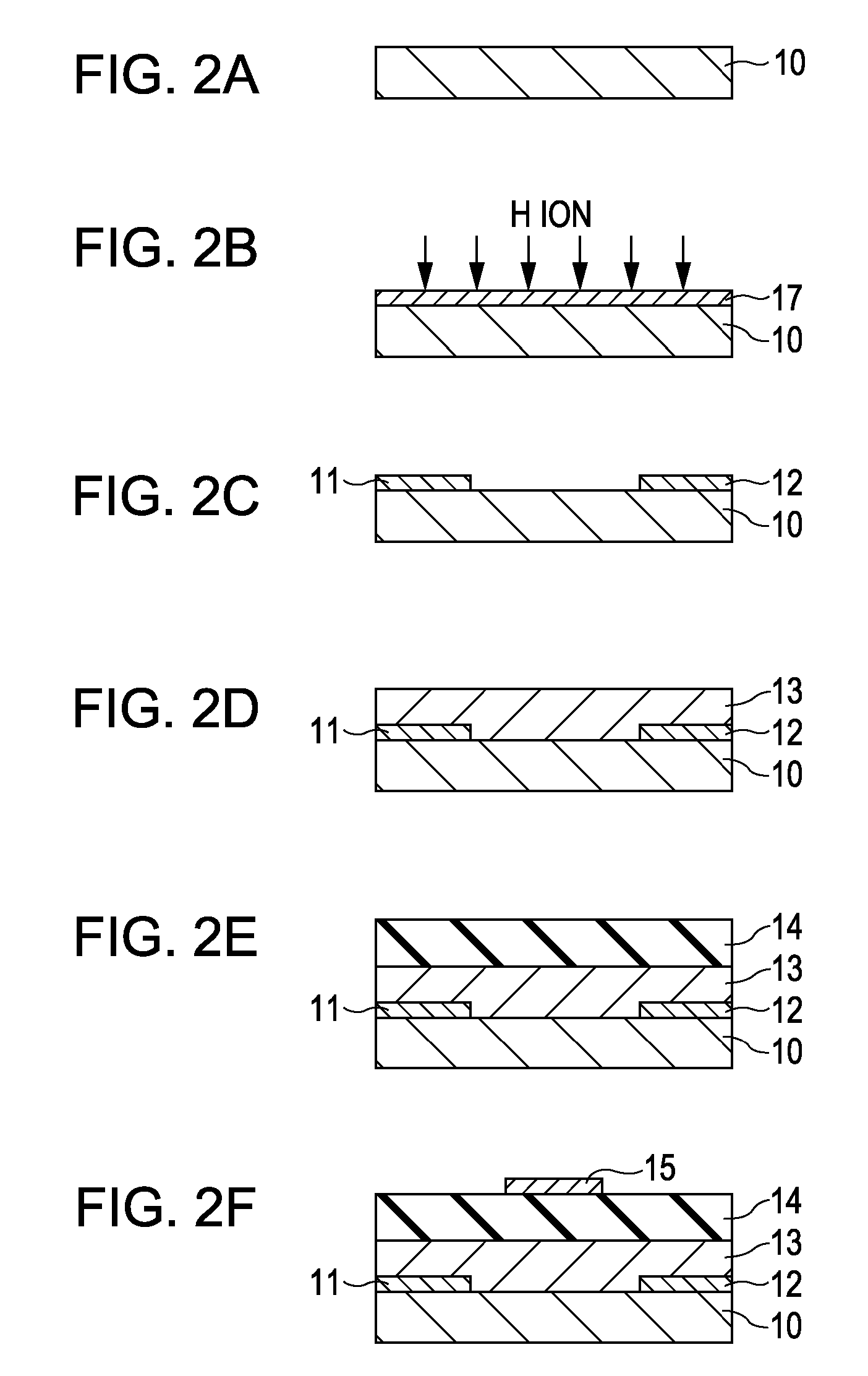Field-effect transistor and method for manufacturing the same
a field-effect transistor and transistor technology, applied in the field of field-effect transistors, can solve the problems of difficult to increase electron mobility, the inability of zno-based compounds to form stable amorphous phases at room temperature, etc., and achieve the effect of reducing parasitic resistan
- Summary
- Abstract
- Description
- Claims
- Application Information
AI Technical Summary
Benefits of technology
Problems solved by technology
Method used
Image
Examples
example 1
[0072]FIGS. 2A-2F illustrate a method for manufacturing a top-gate field-effect transistor. As illustrated in FIG. 2B, an electrode layer 17 is formed on a glass substrate 10 (Corning Inc., 1737) as illustrated in FIG. 2A, by sputtering. A source electrode 11 and a drain electrode 12 are later formed from the electrode layer 17. The electrode layer 17 is formed of indium tin oxide (ITO) and has a thickness of 50 nm.
[0073]Hydrogen (H2) is then implanted into the ITO electrode by ion implantation at an implantation energy of 5 keV and a hydrogen ion dose of 1×1016 ( / cm2). The hydrogen concentration under this ion implantation condition is estimated to be about 1×1021 ( / cm3).
[0074]As illustrated in FIG. 2C, the electrode layer 17 is patterned by photolithography and etching to form the source electrode 11 and the drain electrode 12.
[0075]As illustrated in FIG. 2D, an amorphous In—Zn—Ga—O oxide semiconductor layer 13 having a thickness of 50 nm is formed on the source electrode 11, the ...
example 2
[0088]FIGS. 4A to 4G illustrate a method for manufacturing a top-gate field-effect transistor. As illustrated in FIG. 4B, an electrode layer 17 is formed by sputtering on a glass substrate 10 (Corning Inc., 1737) illustrated in FIG. 4A. A source electrode 11 and a drain electrode 12 are later formed from the electrode layer 17. The electrode layer 17 includes a Ti layer having a thickness of 5 nm formed on the glass substrate 10 and a Pt layer having a thickness of 50 nm formed on the Ti layer.
[0089]Pt is sputtered in an H2 gas and an Ar gas at a flow ratio of about 3:100.
[0090]As illustrated in FIG. 4C, the electrode layer 17 is patterned by photolithography and etching to form the source electrode 11 and the drain electrode 12.
[0091]As illustrated in FIG. 4D, an amorphous In—Zn—Ga—O oxide semiconductor layer 13 having a thickness of 50 nm is formed on the source electrode 11, the drain electrode 12, and the glass substrate 10. The oxide semiconductor layer 13 is formed with an RF ...
example 3
[0098]FIGS. 5A-5E illustrate a method for manufacturing a bottom-gate field-effect transistor. As illustrated in FIG. 5B, a gate electrode 15 is patterned on a glass substrate 10 (Corning Inc., 1737) as illustrated in FIG. 5A, by photolithography and etching. A Ti layer (5 nm) and a Pt layer (50 nm) are formed, as the gate electrode 15, on the glass substrate 10 in this order by sputtering.
[0099]As illustrated in FIG. 5C, a gate insulating film 14 is patterned by photolithography and etching. The gate insulating film 14 is a SiO2 film having a thickness of 150 nm formed by sputtering.
[0100]As illustrated in FIG. 5D, an oxide semiconductor layer 13 is patterned by photolithography and etching. The oxide semiconductor layer 13 is formed of an amorphous In—Zn—Ga—O oxide semiconducting material and has a thickness of 50 nm.
[0101]The oxide semiconductor layer 13 is formed with an RF sputtering apparatus at a substrate temperature of room temperature (25° C.). A target is a three-inch pol...
PUM
| Property | Measurement | Unit |
|---|---|---|
| thickness | aaaaa | aaaaa |
| thickness | aaaaa | aaaaa |
| temperature | aaaaa | aaaaa |
Abstract
Description
Claims
Application Information
 Login to View More
Login to View More - R&D
- Intellectual Property
- Life Sciences
- Materials
- Tech Scout
- Unparalleled Data Quality
- Higher Quality Content
- 60% Fewer Hallucinations
Browse by: Latest US Patents, China's latest patents, Technical Efficacy Thesaurus, Application Domain, Technology Topic, Popular Technical Reports.
© 2025 PatSnap. All rights reserved.Legal|Privacy policy|Modern Slavery Act Transparency Statement|Sitemap|About US| Contact US: help@patsnap.com



